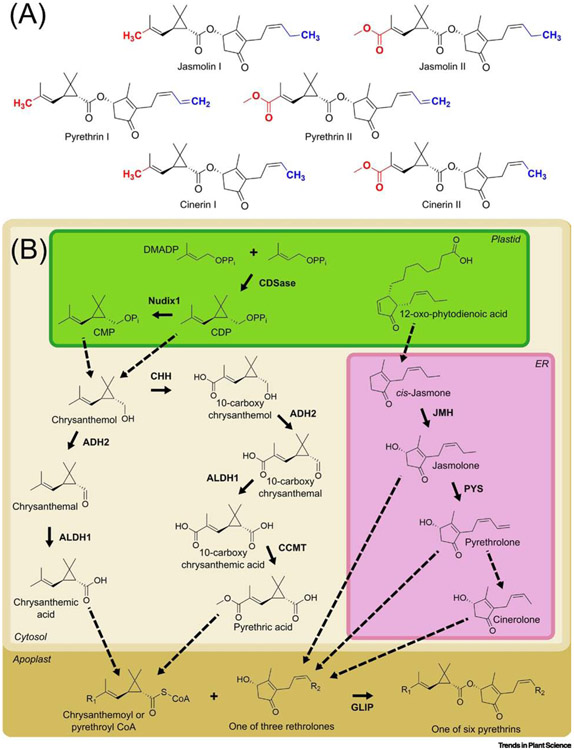Figure 1.
Pyrethrins and their biosynthesis. (A) Structures of the six natural pyrethrins found in Tanacetum cinerariifolium. Variable portions of the monoterpenoid moiety are highlighted in red, while variable portions of the rethrolone moiety are highlighted in blue. (B) The monoterpenoid skeleton of pyrethrins is plastidially derived while subsequent modifications of this skeleton such as oxidation, methylation, and conjugation to Coenzyme A occur in the cytosol and apoplast. The oxylipin skeleton of pyrethrins is produced in the plastid while conversion to rethrolones occurs in the endoplasmic reticulum. Final conjugation of the monoterpenoid and rethrolone moieties of pyrethrins occurs in the apoplast. Enzymes are indicated in bold text; solid arrows indicate known steps in the pathway; dashed arrows indicate steps not yet elucidated. Abbreviations: ADH2 – alcohol dehydrogenase 2; ALDH1 – aldehyde dehydrogenase 1; CCMT – 10-carboxychrysanthemic acid methyltransferase; CDP – chrysanthemyl diphosphate; CDSase – chrysanthemyl diphosphate synthase; CMP – chrysanthemyl monophosphate; CoA – coenzyme A; DMADP – dimethylallyl diphosphate; ER – endoplasmic reticulum; GLIP – GDSL lipase-like protein; JMH – jasmone hydroxylase; PYS – pyrethrolone synthase. R groups: R1 – CH3 or COOCH3; R2 – CH3, CH=CH2, or CH2CH3.

